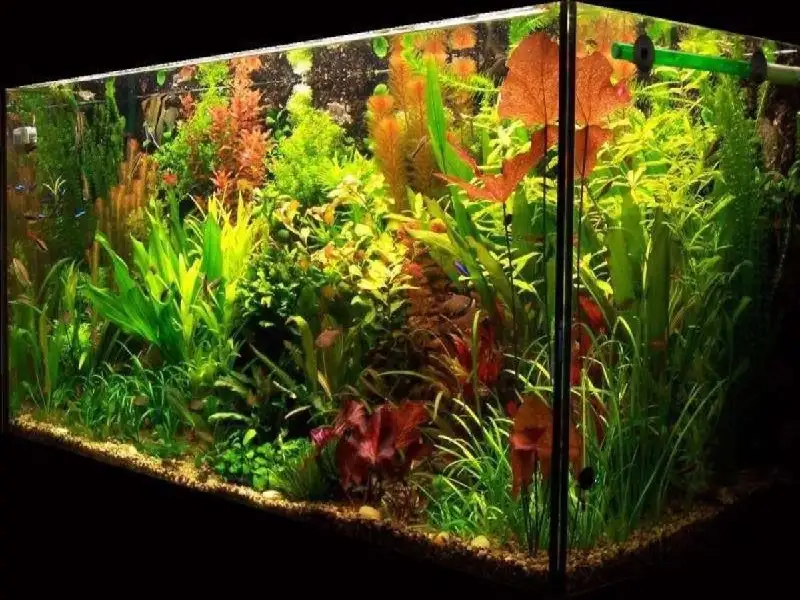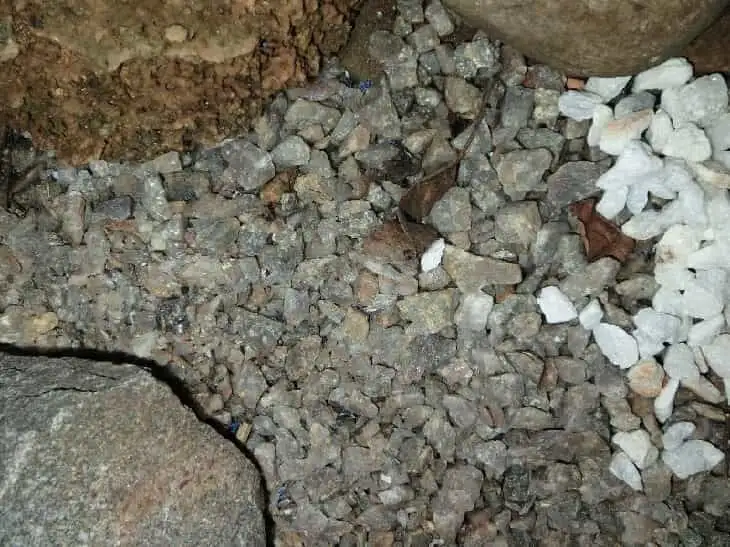THE RULES OF PLANTING PLANTS IN THE AQUARIUM, FOR BEGINNERS AND GROWING DIFFERENT KINDS OF PLANTS AT HOME

Growing aquarium plants can turn an ordinary aquarium into a delightful underwater garden. Live plants take your aquarium to a new level. Not only do they improve the appearance of the aquarium, but they also benefit the inhabitants by absorbing toxins, suppressing algae growth, and providing shelter.
You can buy plants for the aquarium at any time of year, but before buying them you need to decide on many of the parameters of the aquarium and the inhabitants that inhabit it.
Choosing the size of the aquarium
The type of plants, as well as the varieties of fish you are going to keep, will affect the size of the aquarium you purchase. I would like to point out right away that you can grow plants in any aquarium.
As a rule, for aquarium fish, it is better that the aquarium is as large as possible. Large aquariums are easier to care for, they also give the fish more living space.
Maintaining proper water conditions is always a challenge when maintaining an aquarium, that is, parameters such as temperature and chemical composition.
Plants can be placed in the background or foreground as well as on the surface of the water. You also need to assess the compatibility of your fish and plants. They should both have the same water requirements.
Substrate
Substrate is one of the most important parts when it comes to growing live aquarium plants. It is especially important if you are going to plant plants with a well-developed root system in the aquarium.
Both sand and gravel are very good substrate for planting live aquarium plants. You can grow aquarium plants in both substrates. These substrates decompose very slowly, but they do not contain enough nutrients, which means that additional fertilizers will be required. The size of the substrate fractions determines its effectiveness. Sand, for example, is fine-grained, and plant roots may not be able to penetrate deeply. In addition, it will be difficult for the root system to develop in deep sandy strata due to lack of oxygen.
Because plants absorb most of their nutrients through their roots, planting in a nutrient-rich substrate will encourage faster growth. In depleted soil, it is advisable to put lumps of clay or special fertilizer tablets under the roots of the plants, which contain all the necessary nutrients for successful bush development. On the other hand, in a thick layer of coarse gravel, plants do not root well.
The best substrate size for any planted aquarium should be between 2 and 5 mm. Whichever substrate you choose, make sure it is suitable for the fish and plants you intend to keep.
Planting plants
After selecting the substrate and the aquarium plants, the next step is to plant the plants according to the process described below:
- Put down the sand/gravel: Clean the sand and spread it carefully in a layer about 3-4 cm thick at the bottom of the aquarium. Coarse sand is the best choice, as it will supply the plants with nutrients and filter the water. When using gravel, choose fine-grained varieties. You can also mix it with sand.
- Fill the aquarium 2/3 full with water at 22-27º C, this range is ideal for most aquatic plants. Pour the water carefully to avoid damaging the substrate.
- Most plants come in a plastic pot filled with mineral wool. Remove the plant from its packaging. Squeeze the pot to push out the plant and the mineral wool. If the roots are overgrown and tangled, you may need to trim them back a bit. If the mineral wool is stuck to the plant, use your fingers, a fork or large tweezers to gently remove as many pieces as possible. Rinse off any remaining debris, and now you're ready to plant the plant.
Before you begin planting plants in the aquarium, you must first plan the interior landscape, choosing the location of each shrub based on its ornamental value, height, and lighting requirements. At the planning stage, place some rocks and snags on the bottom, which can give the aquarium a more natural look.
You can place aquarium plants in different areas of the aquarium. Planting stem shrubs is a fairly simple process. You just have to bury the roots of the plant in the substrate. If the plant has too small roots or no roots at all, you can simply bury the shrub in the ground a little pressed on top of a small stone. The shrub will take root in time and should root well in the substrate.
For potted plants, you must dig a hole in the substrate the size of the pot and bury it in it. Ferns do not need to be placed in a layer of substrate, just attach them to something sturdy.
Some plants, such as mosses, can be planted on rocks or snags by attaching them to them with thin fishing line or cotton thread. Alternatively, you can glue the plant to the decoration using a special glue, which can be purchased at a pet store.
Floating aquarium plants, as the name implies, are plants that grow on the surface of the water. When placing these plants, keep in mind that they create shade and plants that grow at the bottom may not have enough light for normal development.
Trim plants regularly to stimulate their growth. Some plants grow very fast and take up too much space in the aquarium. Use a very sharp knife to cut off dead leaves, dead stems and trim the grass or moss in the aquarium every time you clean the aquarium.
Live aquarium plants are a very good addition to any aquarium. By dedicating a little time for systematic aquarium maintenance, in return you will get a mesmerizing piece of the underwater world in your home that will be a source of pride and admiration from your acquaintances. Have fun aquascaping!






